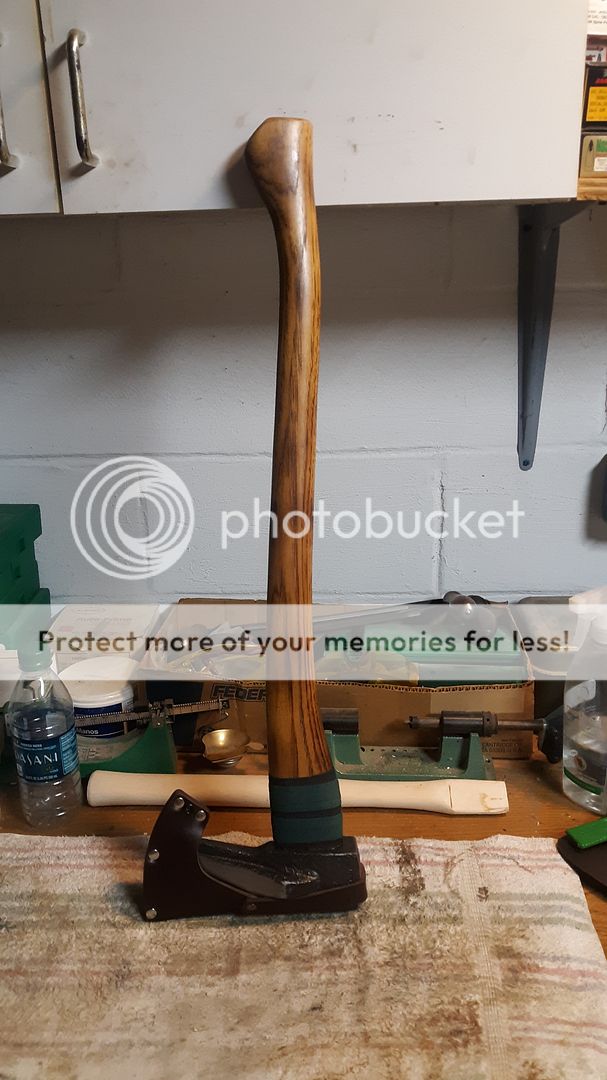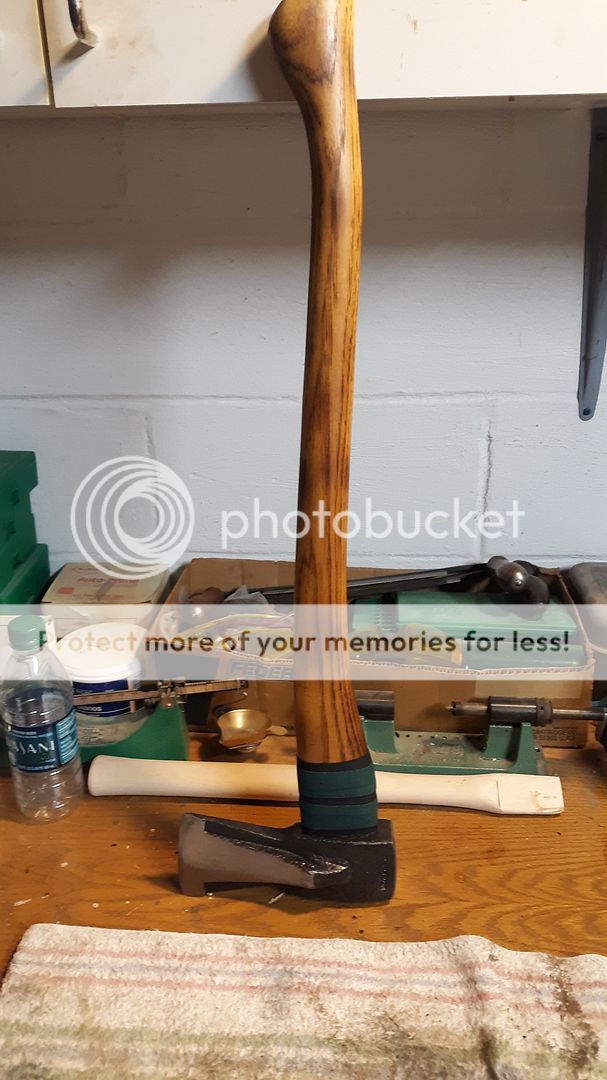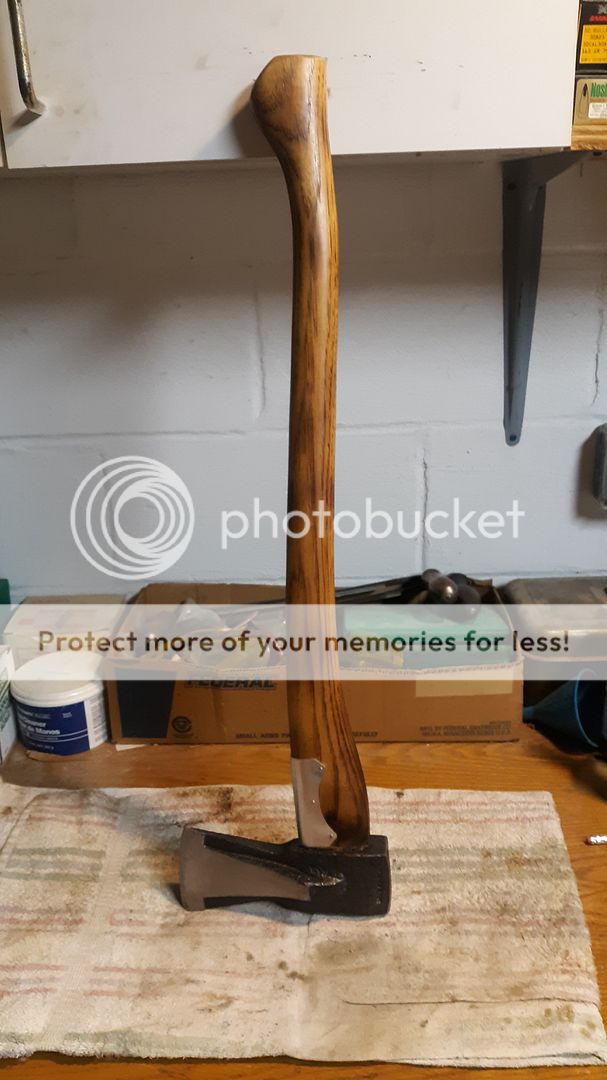- Joined
- Jan 15, 2007
- Messages
- 554
The axe head is a Condor that was purchased a number of years ago. It came on a 36" curved handle that IMO was not an optimum application. I found that Helko offered 28" handle replacements for their Speltaxe. I decided to buy one and hope that it would be a little over sized for fitting up to the Condor head. It was a nice oversize. Using a draw knife I fitted the Helko handle to the Condor head. I really like the balance and application. It is a great splitter for its size.
The intended application is a wood pile medium size kindling splitter and campfire splitter for when you want a short handled splitter that offers more than a short handled camp axe. I tend to split my wood pile rounds to optimum size for long burning in the stove--then I break down some medium and starter kindling from there. My miner's axe does the most of the kindling but sometimes I reach for a heavier splitter to make the initial split.
I have an aluminum guard coming from Muller. I will then decide whether that will be the final look or whether I will cover the aluminum guard with my trade mark hockey tape.
My Fiskars X25 just got bumped aside by this more traditional choice of a "svelte German" splitter..


The intended application is a wood pile medium size kindling splitter and campfire splitter for when you want a short handled splitter that offers more than a short handled camp axe. I tend to split my wood pile rounds to optimum size for long burning in the stove--then I break down some medium and starter kindling from there. My miner's axe does the most of the kindling but sometimes I reach for a heavier splitter to make the initial split.
I have an aluminum guard coming from Muller. I will then decide whether that will be the final look or whether I will cover the aluminum guard with my trade mark hockey tape.
My Fiskars X25 just got bumped aside by this more traditional choice of a "svelte German" splitter..



